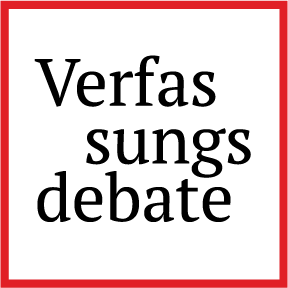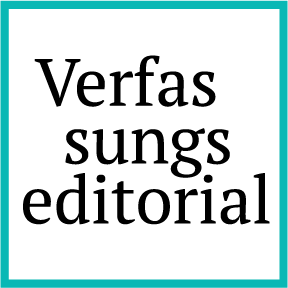The White Paper Within the Institutional Constraints
The EU Short-Term Defence Policy “Readiness 2030”
The European Commission’s recently published Joint White Paper on European Defence, together with the ReArm Europe Plan; now “quietly rebranded” as “Readiness 2030”, signals a transformative moment in the European Union’s approach to security. This strategic shift was reinforced by the Council Conclusions of 20 March, which provided clear political backing for intensified defence cooperation, demonstrating a broad alignment among Member States. Nevertheless, in case of emergencies such alignment remains limited to short-term measures, as more permanent frameworks are constrained by lack of political will and institutional obstacles. If not addressed, this will perpetuate a short-term vision that risks undermining the building of a stronger European strategic resilience, capable of addressing not only traditional defence challenges but also broader hybrid threats to democratic governance and societal cohesion.
The White Paper’s underlying premise
Long anchored in its role as a project of economic integration, the EU has, over recent decades, expanded its remit to include common foreign policy and, increasingly, ambitious defence initiatives. The White Paper’s underlying premise echoes the notion that credible defensive capabilities and a robust industrial base are indispensable to shaping the EU’s international identity. This idea, already long discussed, has gained urgency due to evolving geopolitical challenges, notably the war in Ukraine and the renewed skepticism, if not outright hostility, from the new U.S. administration towards the European project.
These pressures have compelled the Commission to propose a comprehensive overhaul of its defence policy, encompassing diverse objectives with projected expenditures totalling approximately over EUR 950 billion over the next four years. However, while such measures can represent a sign of progress, they also reveal the limitations and contradictions inherent in the EU’s defence framework, which relies mainly on temporary emergency provisions, national budgets, and private capital rather than common EU resources, reflecting not only institutional constraints but also a persistent political reluctance to fully embrace a more robust EU role in defence. Thus, the EU as of now remains able to act efficiently only on a short-term, reactive posture, instead failing to envisage more permanent, structural solutions needed to achieve true strategic resilience.
The sources of funding
First, the Commission recommends Member States to utilize the National Escape Clause in the Stability and Growth Pact, providing immediate fiscal flexibility to expand defence budgets significantly, up to 1.5% of GDP for four years, without immediate penalties or procedural burdens. The Commission projects this unlocked funding could amount to around €800 billion over the next four years, assuming all states fully exploit the 1.5% margin.
Second, the Commission introduced the €150 billion Security Action for Europe (SAFE) instrument, explicitly targeting collaborative defence procurement projects. SAFE funding will be raised through EU budget-backed loans issued directly to Member States participating in joint procurements, enhancing the European defence industrial base and stimulating joint capability development.
Lastly, the Commission plans to mobilize private capital and leverage the European Investment Bank’s (EIB) financial capacities, doubling its annual defence-related investment to €2 billion. Clarifying the regulatory environment under the Sustainable Finance Disclosures Regulation (SFDR) will further support private capital mobilization, facilitating greater private-sector participation in defence investments, particularly emphasizing dual-use technologies critical for both civilian and military applications.
The European Council endorsed the plan on 20 March 2025, also underlining the urgency of accelerating European defence readiness, emphasizing complementarity with NATO, and stressing the importance of swift implementation, including capability development and securing credible security guarantees for Ukraine.
The nature of a “defence expense”
Clearly defining what constitutes “defence expenditure” is central to implementing these initiatives. The Union has affirmed its adherence to Eurostat’s COFOG (Classification of the Functions of Government) division 02 guidelines, encompassing military expenditure strictly related to defence activities, including costs for personnel, equipment procurement, infrastructure, operations and maintenance directly linked to armed forces, recorded at the time of delivery or acquisition, consistent with national accounts principles.
In contrast, NATO guidelines employ a somewhat broader definition similarly covering equipment procurement, infrastructure, and personnel costs, but also including certain additional expenditures such as pension payments to retired military and civilian defence personnel, peacekeeping and humanitarian operation costs, and dual-use item expenditures with clear military applications or capabilities support.
This divergence creates potential discrepancies, particularly given the Commission’s efforts to align with NATO’s benchmark of dedicating at least 2% of GDP to defence. The EU’s different COFOG standard may result in lower or differing reported expenditures compared to NATO methodologies, risking discrepancies in reported defence commitment levels between the two frameworks.
Nevertheless, the scope of such measures is still a matter of debate, with proposals from certain countries in the Council discussions such as the Spanish one advocating for the inclusion of expenditures addressing other challenges such as rising sea levels or irregular migration. Such proposals, however, have been rebuked as of now by the Commission, which explicitly warned against broadening definitions, cautioning against potential “defence-washing”.
The use of Article 122 TFEU and the temporary framework
Another noticeable trend is using Article 122 TFEU which has become a pivotal legal basis for urgent economic and financial measures, from the European Financial Stabilisation Mechanism to the COVID-19 crisis SURE (Support to mitigate Unemployment Risks in an Emergency) instrument. This reflects the need for swift actions but has been criticized by various parliamentarians, including EP President Metsola, for sidelining the EU Parliament.
Indeed, the CJEU has repeatedly addressed the Commission’s powers in enacting emergency measures, highlighting a restrictive interpretation of an emergency context and reinforcing the principle that Article 122(2) TFEU cannot be invoked to run open-ended, structural programs beyond transient emergencies. In the ESM context, the Court ruled that lasting or large-scale financing tools fall outside the scope of a Treaty provision conceived for acute, short-lived crises, stating that Article 122(2) measures need a precise temporary framework tightly related to the crisis situation.
Consistently, the Commission’s Explanatory Memorandum to the SAFE proposal explicitly labels it a “temporary emergency instrument” similar to the EFSM and pandemic SURE mechanism practice: extraordinary in nature and intended for limited durations. This reliance on exceptional provisions reveals a persistent “emergency mindset”, insufficient for developing a more permanent framework with a strategic vision.
Promoting a more cohesive EU industrial policy and investments
Finally, the Commission recognizes that strengthening Europe’s defence readiness calls for an industrial policy framework systematically linking procurement demand with viable production capabilities. This approach, combined with a “buy European” spirit aiming to boost internal EU demand, is reflected in the SAFE instrument establishing EU-backed loan facilities for Member States’ joint procurements. Notably, this mechanism’s sourcing is limited to entities located in the Union, EEA-EFTA, or Ukraine, effectively restricting participation by third countries like the United Kingdom or Türkiye absent specific security and defence partnerships. Similarly, the regulation includes a 65% domestic content requirement for inputs, preventing critical supply chain exposures, ensuring industrial benefits accrue within Europe, and mitigating reliance on uncertain external providers.
On the financial side, the Commission and EIB have introduced measures extending credit facilities, with the EIB adapting its mandate to finance certain security-related projects. Coupled with Savings and Investments Union risk-sharing incentives, this adaptation aims to draw in private capital, particularly for SMEs and mid-caps engaged in defence innovation. By bridging persistent underinvestment in dual-use technologies and next-generation platforms, these combined efforts encourage greater industrial dynamism and cultivate a genuinely integrated EU defence market with reinforced, resilient supply chains.
Breaking the budget taboo
The new EU measures on defence thus address a predicament that, in certain respects, is not entirely new. EU institutions have in fact showed their capacity to establish ad hoc instruments on relatively short notice. Yet, these initiatives still rest largely on national budgets and private capital, and the measures proposed for Readiness 2030 do not inherently surpass the ambition seen in prior instruments, such as Next Generation EU. Indeed, there is some suggestion that while the White Paper conveys a bolder rhetorical stance, the practical arrangements may be more limited in scope.
Nevertheless, these initiatives can demonstrate that when political will exists, the EU can quickly mobilize resources and respond effectively to crises. This ability to rapidly react presents an opportunity to envisage broader strategic frameworks and perhaps move beyond crisis-specific responses. Such political will however, is missing when long term measures are discussed. Indeed, joint EU backed bonds for defence have already been proposed in the Council discussion by countries such as France. However, these ambitious projects have been consistently rejected by other countries, wary of a further expansion of EU competences and spending.
Besides, any potentially more ambitious proposals, like issuing common EU debt, should also be considered in light of Article 41(2) TEU’s limitations, which explicitly prohibits standard EU budget spending on operations with military or defence implications. Article 122 TFEU, as utilized for SAFE, has indeed provided a useful workaround by allowing debt financing through off-budget instruments. Moreover, alternative funding methods have been suggested, but face practical hurdles due to the need for unanimous member-state approval and potential constitutional challenges at the national level.
Still, considering that threats to EU security have become increasingly hybrid and multifaceted, it could be advisable for the EU to adopt a broader view of defence with a “whole-of-society approach.” This strategy would envisage responses to emerging challenges such as cyber threats, economic coercion, and societal disruption. Accordingly, revising the Stability and Growth Pact to integrate broader strategic resilience factors could counteract a problematic “defence versus development” dichotomy which hostile actors might manufacture and exploit to weaken European cohesion. In fact, adopting this framework aligns closely with the vision of a “Europe qui protège” promoted notably by leaders such as Macron, emphasizing not only territorial defence but also safeguarding democratic governance and societal resilience. However, only the follow up in the implementation of the White Paper will show if such political resolve could exist.
Disclaimer on AI application: The author acknowledges the limited use of the generative AI tools in the process of writing for purposes of general proofreading, editing, and generating ideas. The AI’s output was subsequently proved and reworked.



